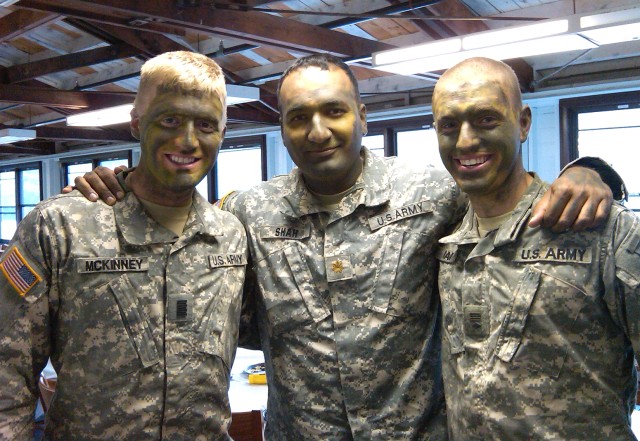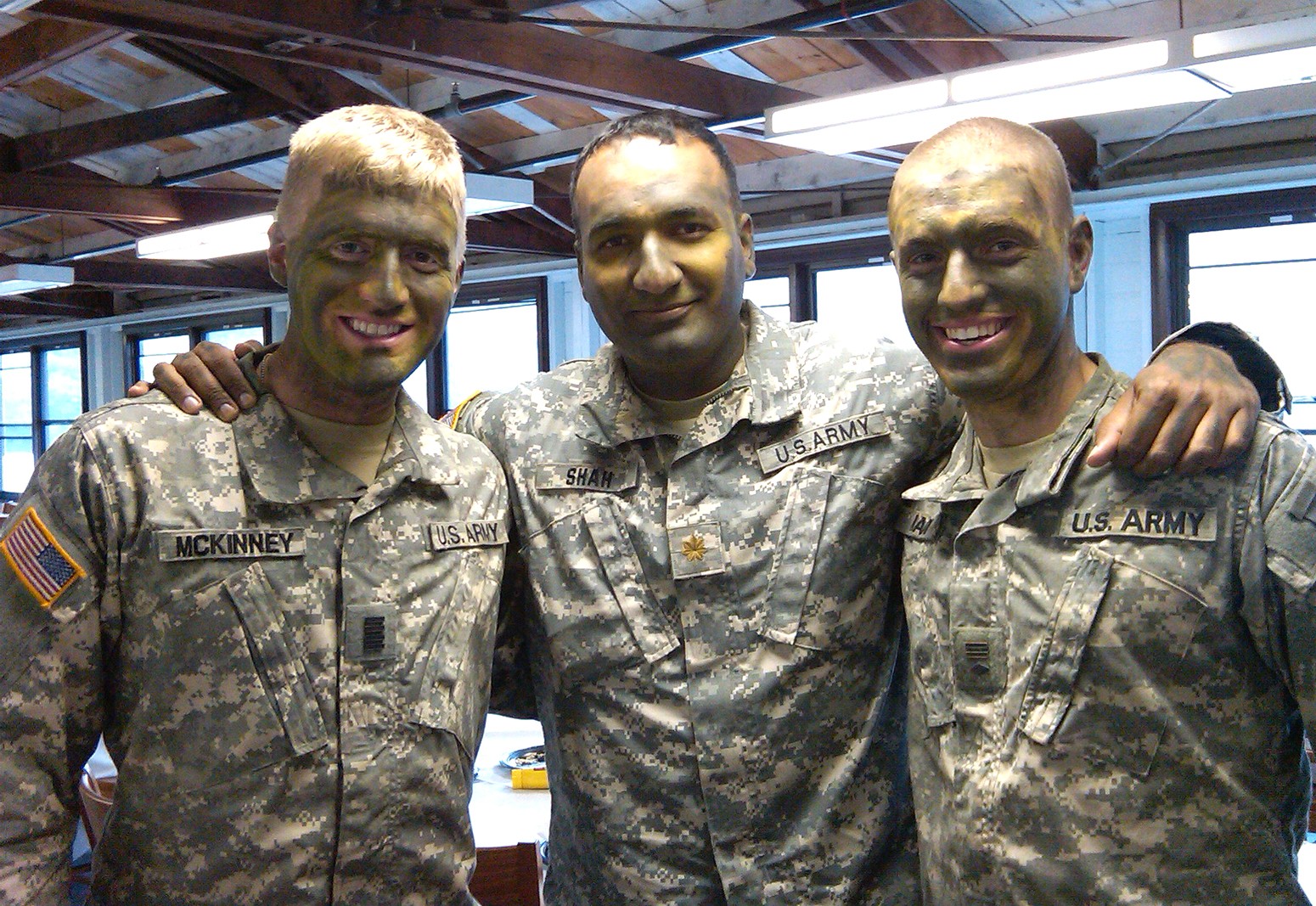The Army career path that took Maj. Rizwan Shah, Company G-4 tactical officer, to where he is today is a long and winding one. He began wearing enlisted stripes. Then those stripes were replaced with the silver bar and black squares of the warrant officer corps.
Alhough he now wears an oak leaf cluster, he still wears stripes-like his heart-on his sleeve when working with his cadets.
"To me, status quo is not good enough," Shah said. "I think that's maybe the NCO in me that's like, 'well, now we're here and we're just getting better.' We're not going to just stop and accept where we're at."
The Chantilly, Va., native enlisted into the Army in 1992 as a combat medic. After reaching the rank of sergeant, he put in a warrant officer packet to become a Blackhawk helicopter pilot.
Then, as a Chief Warrant Officer Two, he submitted an Officer Candidate School packet.
Since earning his commission, Shah has taken care of officer business with regard to the role of the noncommissioned officer in mind.
One of the differences between the ranks, he noticed, is how what he does as a TAC officer centers more on "big picture" and less on the details he focused on as a sergeant or warrant officer.
"From the time you come in as an enlisted Soldier, your life is about attention to detail, the small little details," Shah said. "An officer may point and say, 'we're going in this direction,' but it's the NCO that figures out, 'ok, make sure the truck has fuel in it. If we're walking, make sure we have food and water.'"
Shah feels that because of his experience in all three rank structures, he can give more effective counseling, provide more vignettes and tell the enlisted story to the cadets-in particular, to the yearlings serving as team leaders.
"I'm able to explain things, I think, in a language the cadets understand regardless of their level," Shah said. "They all have different leadership styles and operate at different levels at different times."
He understands that some cadets accomplish academic tasks better than military tasks, and vice versa. Cadets often see military tasks-such as how cadets stand in formation, present themselves in uniform and maintain their barracks areas-as repetitious and mundane.
"'Why is it important to have your barracks squared away'' What does that really mean'" Shah asks. "I think NCOs will be able to provide that link better-it's a sign on not just health and welfare, but you have the capacity to remember SOPs ... and the little details every single day."
Shah teaches cadets the meaning of those details and more during the cadet NCO Academy, a new addition to the summer training curriculum.
The academy's purpose is to teach cadets the specific tasks of the team leader, squad leader and platoon sergeant, using guidance the Army's NCO Manual, Field Manual 7-22.7.
"There is a great need for guidance to our cadet NCOs," Shah states in the Academy manual's introduction. "Cadets in general want to do the right thing. By providing the rising yearlings the tools to be good team leaders, we can affect the entire Corps of Cadets."
The specific duties of the cadet team leader include knowing squad leader duties in order to act in their absence, the duty status of each cadet on the team and how to perform tasks assigned by the squad leader.
Those tasks include making sure cadets have all the equipment they need and providing assistance in all areas of professional development, as required.
Their TAC officers and NCOs will evaluate each team leader's performance and grade them on overall military leadership.
Although TACs don't typically expect perfection from every squad, they will know which cadets are in need of leadership improvement.
"For example, if a team leader has a plebe and (the plebe) fails a class, the guy's in charge of him but he's not going to get penalized because that kid is not successful," Shah said. "But if a squad leader's entire squad fails land navigation, we're going to wonder what's going on."
The difference in the cadets' performance during summer training this year from last year was clear-the added responsibility of training their own gave the cadets a stronger sense of ownership and camaraderie in the squads and the platoons that was not evident two summers ago.
"This year, not only did they prove that cadets could handle it," Shah said, "it's better for the Corps because you have cadets teaching themselves and then teaching others."
The cadet NCOA manual was developed by Shah and his cadets, and is expected to be refined into the new USCC leadership guide. He believes that achieving high standards of leadership throughout the Corps starts with teaching today's team leaders-a vision he shares with Lt. Col. Stephen Michael, 4th Regiment tactical officer.
"(Michael) is big time on empowering the cadets, and I respect him a lot for that," Shah said. "He believes in empowering the lowest level possible, which has effects all the way up."


Social Sharing